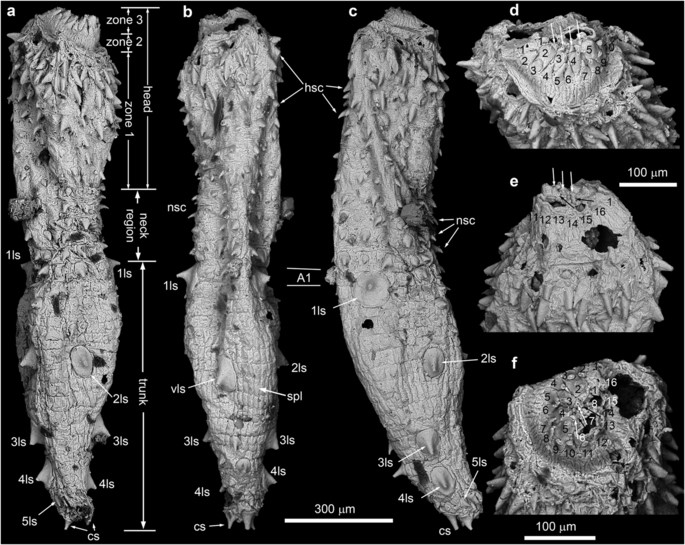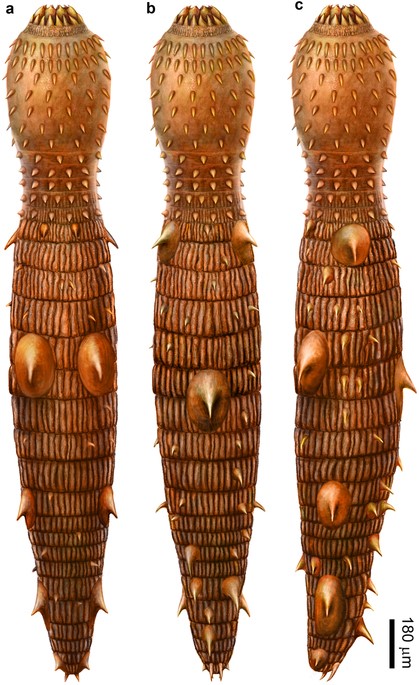
SEM images of Eokinorhynchus rarus gen. et sp. nov.
Kinorhyncha, Loricifera, Priapulida, Nematoda, Nematomorpha, Onychophora, Tardigrada and Arthropoda constitute the Ecdysozoa which is major part of the animal world. The Kinorhyncha includes ~240 extant species of exclusively marine, holobenthic, free-living, meiofaunal animals. So far, Kinorhyncha has no fossil record, and its origin and evolution is currently unknown.
Recently, in a collaborative research by Dr. ZHANG Huaqiao from Nanjing Institute of Geology and Palaeontology, Chinese Academy of Sciences, Prof. XIAO Shuhai from Virginia Tech and other scientists recovered three dimensionally phosphatized worm-like fossils from early Cambrian rocks, approximately 535 million years old, in northern Sichuan and southern Shaanxi Provinces. These new fossils are interpreted as early kinorhynch animals, representing the only known kinorhynch fossils in the entire geological history. One of the newly discovered fossil taxa is named Eokinorhynchus rarus, alluding to its relationship with modern kinorhynchs and its rareness in the fossil record. Eokinorhynchus rarus is around 2 mm in length and has 20 macroannuli each bearing a single circlet of 20~40 rectangular plates. It has five pairs of bilaterally arranged large spinose sclerites and a single large spinose sclerite on the ventral side, each sclerite straddling two or three macroannuli. There are many small internally hollow spines randomly distributed on the trunk.
Dr. ZHANG and colleagues found that Eokinorhynchus rarus has a number of similarities with living kinorhynchs, suggesting a close evolutionary relationship. For example, the trunk of Eokinorhynchus rarus and living kinorhynchs have a number of hollow spines and are divided into segments, each consisting of articulated plates. However, unlike modern kinorhynchs, Eokinorhynchus rarus is armoured with spines that are larger and more distinct than spines on modern kinorhynchs. It also has much more body segments than modern kinorhynchs. In light of these similarities and differences, Dr. ZHANG suggest that Eokinorhynchus rarus may be closely related to the ancestor of modern kinorhynchs and represents the first and only known fossils of Kinorhyncha. The new discovery indicates that Kinorhyncha emerged in the early Cambrian and is part of the "Cambrian Explosion".
This research was recently published in Scientific Reports, a Nature family journal.
Related information: Huaqiao Zhang, Shuhai Xiao, Yunhuan Liu, Xunlai Yuan, Bin Wan, A. D. Muscente, Tiequan Shao, Hao Gong & Guohua Cao, 2015. Armored kinorhynch-like scalidophoran animals from the early Cambrian. Scientific Reports. Doi: 10.1038/srep16521.

Reconstruction of Eokinorhynchus rarus gen. et sp. nov.
